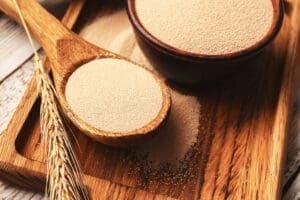When most people think of beer, their minds often jump to hops, malt, or even water. However, one of the most vital and frequently overlooked ingredients is yeast. This microscopic organism is the unsung hero of beer, fermenting sugars into alcohol and carbon dioxide while also strongly influencing the beer’s aroma, taste, and overall character. Here, we’ll explore how yeast variety in beer creates an incredible palette of flavors, making it a true workhorse in the brewing process.
 The Role of Yeast in Fermentation
The Role of Yeast in Fermentation
Before diving into the nuances of yeast varieties, we need to understand the fundamental role yeast plays in brewing. Yeast is a single-celled fungus that ferments the sugars extracted from malted grains, turning them into alcohol and carbon dioxide. This process not only creates the alcohol content in beer but also produces a wide range of flavors and aromas as byproducts, such as esters and phenols. The specific strains of yeast and the conditions under which they ferment can lead to vastly different outcomes in the finished beer.
How Different Yeast Strains Affect Beer Flavor
The importance of yeast variety is most evident when considering the different styles of beers. Each style has its own traditional yeast strain that helps define its character: Ale Yeasts: Often used in warmer fermentation processes, ale yeasts are known for producing fruity and spicy flavors. Common esters include isoamyl acetate, which imparts a banana-like aroma, and ethyl acetate, which can add a hint of pear or apple. These yeasts are commonly used in styles like IPAs, stouts, and Belgian ales, where complexity and richness are desired. Lager Yeasts: Fermenting at cooler temperatures, lager yeasts produce fewer esters and phenols, leading to cleaner, crisper flavors. This allows the malt and hops to shine through without being overshadowed by yeast-derived flavors. Lagers are typically smoother and less fruity than ales, making them popular in styles like pilsners, bocks, and märzens. Wild and Mixed Fermentation Yeasts: Brettanomyces yeasts, along with bacteria such as Lactobacillus and Pediococcus, are used in sour and wild ales. These strains can introduce a wide range of flavors, from tart and funky to earthy and leathery, creating beers with a unique and often unpredictable character. These yeast strains are central to styles like Lambics, Goses, and American Wild Ales.
Why Yeast Variety in Beer Matters
Yeast variety is crucial for several reasons: Flavor Complexity: The choice of yeast can dramatically alter a beer’s flavor profile. Even subtle differences in yeast strain can lead to noticeable changes in taste and aroma, allowing brewers to create distinctive and memorable beers. Style Authenticity: The yeast used during fermentation defines many traditional beer styles. For example, a Belgian Dubbel without the characteristic fruity and spicy notes from Belgian yeast would lose much of its authenticity. Yeast variety allows brewers to stay true to classic styles or innovate new ones. Artistic Expression: Just as an artist chooses colors to convey a mood, a brewer selects yeast to express a particular vision for their beer. The wide variety of yeast strains allows brewers to experiment and push the boundaries of what beer can be. Consistency vs. Experimentation: While some brewers aim for consistency, using the same yeast strain to ensure a uniform product, others embrace the variability different yeasts can introduce. Experimenting with yeast strains can lead to new flavor combinations and innovative beer styles.
Taste How Yeast Variety Impacts Beer at The Growler Guys
Yeast is so much more than a fermenting agent in the brewing process. It’s a cornerstone of flavor, providing brewers endless opportunities to craft unique and diverse beers. Taste the difference yeast variety can make with a beer flight at your local Growler Guys. With crisp lagers, fruity Belgian ales, funky sours, and more on tap, the Growler Guys is the perfect place to appreciate the yeast behind the brew. Stop in for a flight, pint, or growler fill today.

 The Role of Yeast in Fermentation
The Role of Yeast in Fermentation
Reader Interactions